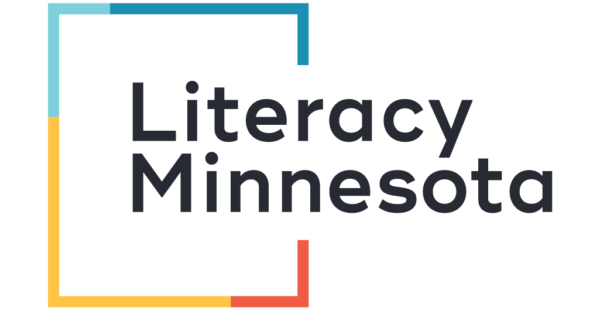Dev Ed/ABE Toolkit: Chapter 2 – Part 1

For unfamiliar terms, agency names, or acronyms, please see Glossary.
Navigate to sections of Chapter 2:
- Part 1 – Where to Start, Securing Campus and ABE Administration Support, Formalizing the Partnership, Funding the Partnership
- Part 2 – Selecting Instructors for the Partnership, Partnership Roles, Courses Suited to Collaboration
- Part 3 – Advance Planning, Revising Over Time, Sustaining Your Partnership
Chapter 2 – Part 1
It cannot be emphasized enough how critically important it is to secure partnership champions, and this means obtaining the support of administrators from both sides of the partnership. Innovation and change often challenge people, and positive, insightful leadership can help support and navigate the transition.
Objectives:
- To provide readers with information about who to contact if they are interested in exploring a Dev Ed/ABE partnership, regardless of who may wish to initiate, and how to assemble a team
- To provide readers with a clear understanding of the role of the administrators in both realms (Dev Ed and ABE) and why it is so important to have them on board as a champion who supports the partnership
- To apprise readers about the benefits of using an MOU or Joint Powers Agreement to formalize the partnership and when the timing might call for it
- To advise readers about the need to fund certain aspects of the partnership at the startup phase and over time to sustain it. Considerations from both Dev Ed and ABE are outlined
Intro
Presently, educators are coming together across the state to share practices and learn from one another regarding how successful Dev Ed/ABE partnerships work. This is especially true as Minnesota State campuses are devising and piloting strategies to address the Minnesota State DESR (Dev Ed Strategic Roadmap), discussed in the preface. There has been a vast hunger among practitioners who are asking their peers questions such as:
- How did you get your partnership going? Who initiated it?
- Is there campus buy-in and support for the partnership?
- How much up-front design/prep time was needed?
- How is your partnership funded?
- Which classes are involved?
- How do you overcome resistance to team teaching?
- Isn’t having two instructors teach a Dev Ed course duplicative?
This chapter will provide many suggestions and ideas regarding these questions. This chapter is the heart of the Toolkit, and as such is the longest chapter. It is brimming with tips, suggestions, and recommendations for how an individual or a team can go about exploring, beginning, and sustaining a Dev Ed/ABE partnership. And because of its length, the chapter is split into three parts. This is Part 1.
Where to Start: Who Do You Contact and Who Initiates?
 To begin, an ABE Manager can contact the Dean of Liberal Arts (or other appropriate college administrators) at the partnering college, to offer ABE solutions related to Dev Ed students and the faculty that serve them. Conversely, the college administrator can contact the ABE program in their area. Hence, the partnership can be initiated by either party. A partnership can form when both parties feel that it will be beneficial for students and each program.
To begin, an ABE Manager can contact the Dean of Liberal Arts (or other appropriate college administrators) at the partnering college, to offer ABE solutions related to Dev Ed students and the faculty that serve them. Conversely, the college administrator can contact the ABE program in their area. Hence, the partnership can be initiated by either party. A partnership can form when both parties feel that it will be beneficial for students and each program.
If ABE is initiating the contact, they can start with the specific programming and academic needs of the college’s learner populations which can be obtained through official meetings with key campus contacts. It takes a few dedicated contacts to get to the point of a willingness to understand and appreciate the strengths of each party and their capacity to envision approaching the work collaboratively. Keep in mind, most highly successful partnerships begin with just one contact who is willing and eager to try something different to solve a problem or take advantage of an opportunity.
As you seek support, communicate with educator colleagues such as the director of advising, the director of TRIO/Student Support Services, the Director of the Tutoring and Learning Center, the Dean overseeing Dev Ed, and academic department leads. Doing so will help you begin to understand specific programming gaps and become better able to identify the needs of learners that are not being fully met. Some examples may include academic supports, digital literacy skills, ELL/ESL and/or college knowledge, and campus life environment/life skills.
Partnerships may start small initially, but nevertheless, it is important to spend quality time up front which affords professional respect and college and ABE instructor relationship growth. This level of commitment and professionalism sets the foundation for the team to determine how, where, what, why, and when to partner.
As discussions lead to meetings with campus faculty and other key individuals, it is important to seek out educators who are interested in engaging with non-campus organizations. Building a team of educators with the same mind-set for improving student success through collaboration – both inside and outside the classroom – is vital for next steps in planning to proceed.
 Once there is an initiator and a champion, administrative support is vital, because the most likely place for a partnership to break down is on the ground. It can be a big change to embrace. Each of the instructional partners possesses areas of strengths and are afforded the opportunity for growth or change. Experienced partners on both the ABE and college side have conveyed that the latter can be comfortably discussed after a period of partnering and building trust with each other. When that happens, you can expect a shared desire to collaboratively make the students’ needs their number one priority.
Once there is an initiator and a champion, administrative support is vital, because the most likely place for a partnership to break down is on the ground. It can be a big change to embrace. Each of the instructional partners possesses areas of strengths and are afforded the opportunity for growth or change. Experienced partners on both the ABE and college side have conveyed that the latter can be comfortably discussed after a period of partnering and building trust with each other. When that happens, you can expect a shared desire to collaboratively make the students’ needs their number one priority.
At the organizational level, it is important for program leaders to determine mutual agreements to share space and information and to develop the framework for the working relationship. A Memorandum of Understanding or a Joint Powers Agreement, if not already in place, can be written to govern the new partnership, establish mutual expectations, clarify roles, and define a path for resolving issues that may arise, including professional disputes.
The spark for change ignites when instructors on both sides of the partnership recognize a need and set about looking for ways to address it. Hopefully, they each will seek out the strengths and resources that the other instructor partner can bring to the table.
Most partnerships come about because of two things: a trusting relationship among the partners, and a shared vision with common goals for the students served. Both elements take time and attention to build and must have the support of the those in an executive leadership role. The most successful collaborations include an essential third component – good communication.
Continue >>
Toolkit Navigation
View full Toolkit
You can view and download the full Dev Ed/ABE Toolkit below.
General Toolkit inquiries and/or feedback should be directed to:
- Russ Fraenkel, Consultant, dba Leading-Edge Collaborations, Inc., [email protected]
- Lesley Blicker, Consultant, dba DesignWorks, [email protected]
Upcoming ABE Events

Racial Equity 101 Presented by Jimmie Heags
Registration Deadline: TUE. 8/6/24 Join presenter Jimmie Heags, Jr., MA, LSC, LPCC, LADC, ACS, for this session that exposes how race is defined and how racism impacts individuals and institutions. The session will provide learners with a framework for understanding and disrupting the attitudes and structures that perpetuate… Learn More

Volunteer Core Training Module 1: Overview of Minnesota Adult Education and Program Accountability
Registration Deadline: TUE. 8/6/24 Participants learn about Adult Basic Education programming in Minnesota, demographics of learners, instructional content standards as well as initial and on-going assessment. This session wraps up with learner motivations, barriers and persistence. Learn More

Volunteer Core Training Module 2: Understanding Adult Learners
Registration Deadline: TUE. 8/13/24 Participants develop their personal cultural awareness and learn how expectations around school culture shape how people teach and learn. Guiding principles for effectively delivering instruction to adults are also covered. Finally, participants increase their sensitivity to the challenges of learning English and developing literacy… Learn More